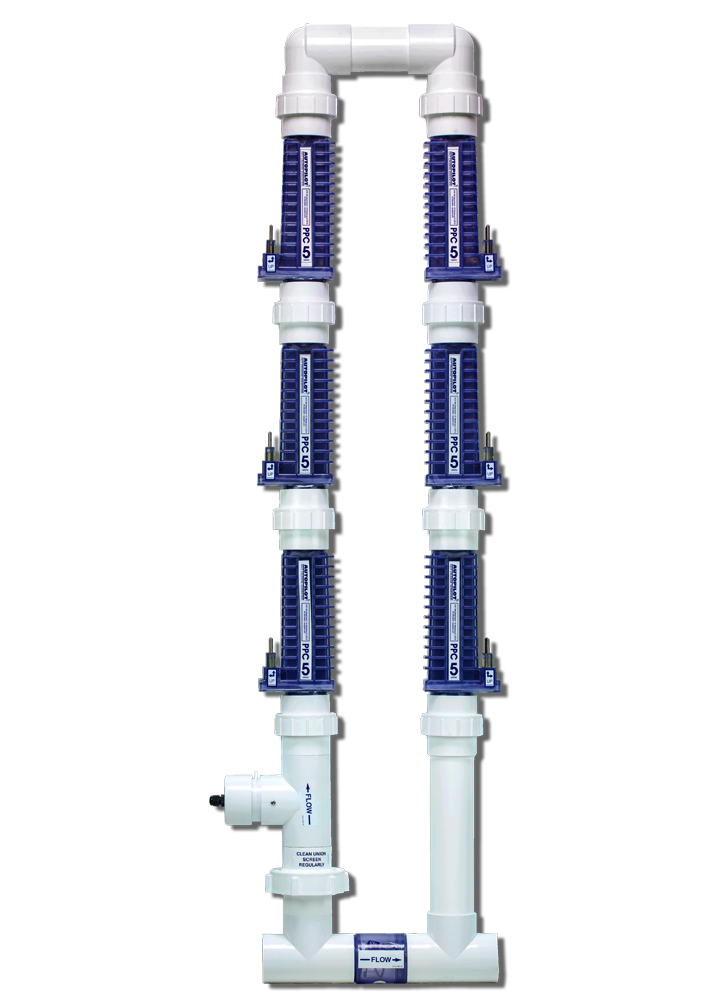Without a simple chlorine generating system available for commercial pools, those facilities that recognized the benefits of using these systems and had the available space within their equipment rooms, along with the sufficient capital to invest, opted for the use of multiple, residential salt chlorine generators.
Oftentimes, due to installation space and complexities, the systems were plumbed in a series configuration. This meant the salt cells were plumbed inline one directly after another. While this type of installation has been widely practiced, it does not represent the most efficient or cost-effective method of reaping the true benefits of salt chlorination. Studies have shown when salt cells are installed in this manner the system’s efficiency can potentially be compromised as the water moves through each successive salt cell.
More specifically, as electrolysis occurs within a cell, salt concentrations are depleted (as salt is converted to chlorine) and gas bubbles are generated, which affect the performance of the next successive cell. Chlorine production is predicated on an expected concentration of salt in the water and having cells configured in series can deprive successive salt cells downstream of the proper salt levels required for optimum chlorine production.
More critical, however, is the presence of gas bubbles as they disrupt the ability of the dissolved salt to come in direct contact with the chlorine generator’s active electrode surface. Only at the surface of the electrodes can the salt be converted to chlorine. When salt cells are installed in sequence, gas bubbles significantly interfere with the key mechanism of chlorine production by blocking the active surface area. For this reason alone, manifolds using a parallel flow path through multiple cells should only be employed when it is necessary to install multiple systems on a given pool.



